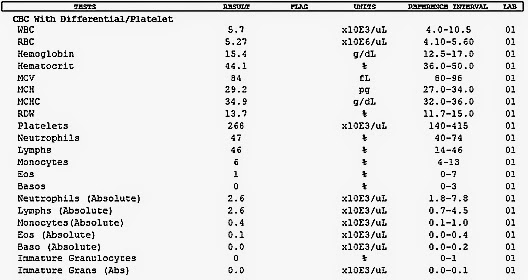

Platelet-Derived Chemokines in Inflammation and Atherosclerosis. The Multifaceted Role of Fibrinogen in Tissue Injury and Inflammation. Fibrinogen-Gamma C-Terminal Fragments Induce Endothelial Barrier Dysfunction and Microvascular Leak via Integrin-Mediated and RhoA-Dependent Mechanism. Uric Acid and Hypertension: A Focused Review and Practical Recommendations. Uric Acid as a Mediator of Endothelial Dysfunction, Inflammation, and Vascular Disease. Longitudinal Association among Endothelial Function, Arterial Stiffness and Subclinical Organ Damage in Hypertension. Hypertension and Endothelial Dysfunction: Therapeutic Approach. Awake Blood Pressure Variability, Inflammatory Markers and Target Organ Damage in Newly Diagnosed Hypertension. Relationship between Mean Platelet Volume Levels and Subclinical Target Organ Damage in Newly Diagnosed Hypertensive Patients. Analysis of Inflammatory Markers in Patients with Abnormal Circadian Rhythm of Blood Pressure. Inflammation in Salt-Sensitive Hypertension and Renal Damage. A Consensus Report by the American Diabetes Association (ADA) and the European Association for the Study of Diabetes (EASD).
MPV IN BLOOD TEST UPDATE
2019 Update to: Management of Hyperglycemia in Type 2 Diabetes, 2018. 2019 ESC/EAS Guidelines for the Management of Dyslipidaemias: Lipid Modification to Reduce Cardiovascular Risk. Ambulatory Blood Pressure Monitoring over 24 h: A Latin American Society of Hypertension Position Paper-Accessibility, Clinical Use and Cost Effectiveness of ABPM in Latin America in Year 2020.

European Society of Hypertension Practice Guidelines for Ambulatory Blood Pressure Monitoring. 2018 Practice Guidelines for the Management of Arterial Hypertension of the European Society of Cardiology and the European Society of Hypertension. The Effect of Mean Platelet Volume/Platelet Count Ratio on Dipper and Non-Dipper Blood Pressure Status. Neutrophil to Lymphocyte and Platelet to Lymphocyte Ratio in Patients with Dipper versus Non-Dipper Hypertension. Inflammation Markers and Risk of Developing Hypertension: A Meta-Analysis of Cohort Studies. Clinical Correlates and Subclinical Cardiac Organ Damage in Different Extreme Dipping Patterns. Roles of Inflammation, Oxidative Stress, and Vascular Dysfunction in Hypertension. Inflammation, Immunity, and Hypertension. Ambulatory Blood Pressure Monitoring versus Self-Measurement of Blood Pressure at Home: Correlation with Target Organ Damage. APROS Investigators Role of Echocardiography and Carotid Ultrasonography in Stratifying Risk in Patients with Essential Hypertension: The Assessment of Prognostic Risk Observational Survey. Prospective Studies Collaboration Age-Specific Relevance of Usual Blood Pressure to Vascular Mortality: A Meta-Analysis of Individual Data for One Million Adults in 61 Prospective Studies. Global Burden of Hypertension and Systolic Blood Pressure of at Least 110 to 115 Mm Hg, 1990–2015. The authors declare no conflict of interest. We found that differences in some inflammatory markers between patients with and without HMOD were not explained by a different circadian BP profile. The circadian BP profile (dipper versus non-dipper pattern) did reach neither statistical significance nor influence the odds ratio of those inflammatory markers for HMOD. Multivariate logistic regression analysis showed that male patients older than 50 years old with uric acid levels above 7 mg/dL, ESR higher than 20 mm/h, fibrinogen greater than 320 mg/dL and PTC lower than 275 × 10 3/µL were associated with HMOD ( p < 0.05). We included 522 patients (47% women, mean age of 54 years). Individuals were divided into two groups: patients with and without HMOD. Myocardial hypertrophy, albuminuria, carotid intima-media thicknesses and ankle brachial index were assessed as HMOD presentations. We included some parameters of 24 h ambulatory blood pressure monitoring collection and several inflammatory markers, as follows: platelet count (PTC), erythrocyte sedimentation rate (ESR), ultrasensitive C-reactive-protein, ferritin, fibrinogen, and uric acid. This was a cross-sectional study that included patients with primary arterial hypertension older than 18 years old. We aimed to explore the influence that the circadian blood pressure (BP) profile could exert on the correlation between some inflammatory markers and hypertension-mediated organ damage (HMOD).


 0 kommentar(er)
0 kommentar(er)
